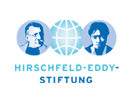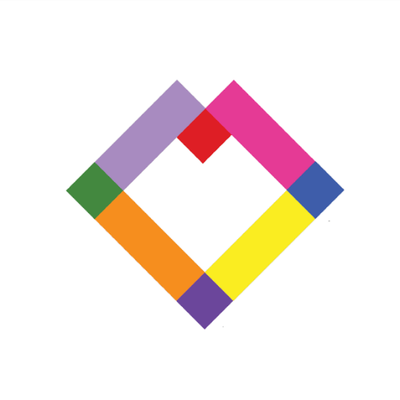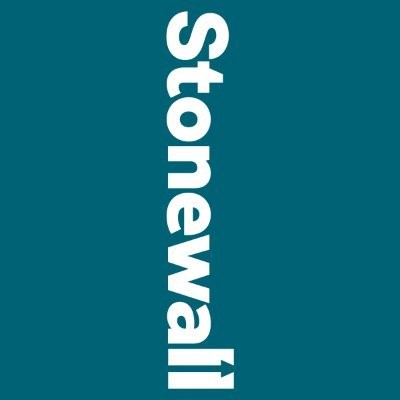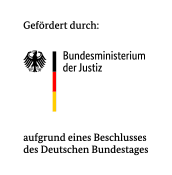Stonewall UK, RFSL Sweden and the Dignity Network, Canada on the Do No Harm Principle in LGBTQI+ activism
LGBTQI+ communities are some of the most vulnerable in the world, even — or especially — when receiving support from non-governmental organizations.
In November 2022, three experts from the field of LGBTQI+ philanthropy and advocacy convened for a virtual panel discussion as part of the Hirschfeld-Eddy Foundation’s “Do No Harm – But Do Something” program, on the second day of a two-day conference. Doug Kerr, Jenny Sundberg, and Leanne MacMillan went through best practices for preserving the safety of queer communities while supporting queer rights and activism.
In October 2012, John Baird, then the Canadian Minister of Foreign Affairs under Prime Minister Stephen Harper, spoke at the 127th Inter-Parliamentary Union Assembly in Quebec. Baird, who is gay, singled out the Ugandan delegation for criticism, on the nation’s LGBTQI+-rights record. The backlash was immediate. One Ugandan newspaper wrote that Baird had “demonized” the country. Rebecca Kadaga, then Speaker of the Ugandan Parliament (and current Deputy Prime Minister), told Baird, “On behalf of the Ugandan delegation, and, indeed, the people of Uganda, protest in the strongest terms the arrogance exhibited by the Foreign Minister of Canada, who spent most of his time attacking Uganda and promoting homosexuality.”
In 2013, Frank Mugisha, the Executive Director of Sexual Minorities Uganda, told the queer magazine Xtra that Baird’s criticism of Uganda’s gay rights record was likely to cause difficulties for local LGBTQI+ activists — himself included. “The problem we have with public statements is that we get the problems — the people on the ground — because we are scapegoated,” Mugisha said.
According to Doug Kerr, Executive Director of Dignity Network Canada, a group of civil society organizations that supports LGBTQI+ human rights, this decade-old diplomatic spat illustrates the tightrope walk at the heart of the advocacy process: good intentions do not guarantee good results, and each queer-advocacy intervention must be considered for its risk of harming local queer communities. Baird “thought he was doing a good thing by calling [Kadaga] out publicly,” Kerr says. “And what he did was actually make things really difficult for the community at the time.”
Listen Closely, Act Carefully
On November 4, the second day of its online conference on the Do No Harm Principle in LGBTQI+ activism and philanthropy, the Hirschfeld-Eddy Foundation presented a panel: alongside Kerr, the participants were Jenny Sundberg, the International Director of the Swedish Federation for Lesbian, Gay, Bisexual, Transgender, Queer and Intersex Rights (RFSL), which has been advocating for the queer community since 1950, and Leanne MacMillan, the Director of Global for Stonewall UK, an organization whose current mission is to “help LGBTQI+ people everywhere to thrive.” The discussion centered on Do No Harm strategies for LGBTQI+ funders, intermediaries, and philanthropic organizations, yielding valuable insights into how such groups can support activists and local nonprofits while avoiding unintended consequences.
The phrase Do No Harm goes back as far as Hippocrates. In queer philanthropy and activism, it can mean many different things. “Queer lives are intersected by many other identities, and there is not one single narrative,” Sundberg says. “Therefore, it’s important to have a broad and pluralist understanding of what ‘harm’ means.” In LGBTQI+ activism and philanthropy, the goal to Do No Harm can be applied through dialogue with activists and organizations on the ground; implemented in organizational processes and funding strategies; and communicated clearly and unwaveringly to partner organizations.
An organizational culture built to prevent harm to queer communities starts from the bottom up. Program officers, Sundberg and MacMillan agree, must listen closely and sensitively to activists and grant recipients on the ground, who can help larger organizations avoid potentially dangerous missteps within complex local contexts. “It’s about consulting with the local, affected population, making sure that you follow up with them, making sure that it’s safe for them to participate and to be heard, informing them of what you’re doing, and building those loops back in,” MacMillan says, “so that you can identify where programs may be having a negative effect.” She adds, for example, that queer communities in Afghanistan may be put at risk simply by being identified as such: “We need to consult locally and safely with the queer community to inform our practices.”
For LGBTQI+ funders and advocacy groups, this care and sensitivity can be applied to more abstract organizational processes as well. As Sundberg points out, RFSL bases its community work on intersectional analysis, considering the multiplicity of queer identity at all “the very different stages of the work.” When the organization implements its funding and regranting, it aims to Do No Harm not just do individuals, but also to local non-profit organizations. Project-based, temporary funding and unwieldly reporting requirements can lead to feelings of precarity and burnout among activists, so RFSL aims to provide core support, long-term funding, flexible budgeting, fewer administrative requirements, and adequate human resources to these organizations. As a principle, Do No Harm applies to work culture and mental health just as it does to physical safety.
Like Sundberg, MacMillan advocates close listening and sensitivity in collaborations with local groups and activists, but also rigorous analysis and airtight safeguards from an organizational perspective. “It’s a question of revisiting already existing standards and, and mainstreaming queer considerations into those, or to create new ones if they’re actually not that robust,” she says. “The final thing is accountability for delivering on them and not being afraid to build that into the day-to-day work of the organization.”
Keep Your Friends Close
According to Matthew Hart, the director of the Global Philanthropy Project, LGBTQI+ organizations receive 3,5 cents for every dollar spent on philanthropy. That means queer advocacy groups often collaborate with major NGOs, folding their issues into larger human-rights concerns. Then, it is even more essential for LGBTQI+ organizations to implement Do No Harm safeguards for queer communities; such NGOs may have less explicit experience in queer communities, among the world’s most vulnerable. RSFL addresses potential security gaps with comprehensive risk assessment, working with partners to identify safety problems “to see how we can mitigate them and jointly address them with different measures,” Sundberg says.
When working in sensitive locations, LGBTQI+ groups must make sure the staff tasked with implementing their projects stands behind their work. If local employees are unsympathetic to LGBTQI+ rights, revealing the identities of queer people — even in the process of implementing programs meant to benefit them — can be risky. “One of the challenges that we have to be very frank about it is: Who are the partners you’re working with at the local level?” MacMillan asks. “Do they really represent the LGBTQI+ community? Do they have good habits and practices?”
To illustrate these risks, Kerr gives the example of Oxfam Canada. During a meeting, Dignity Network Canada brought Oxfam Canada and representatives of queer organizations in Uganda and other countries together to talk about how local branches of Oxfam have held back pro-LGBTQI+ work. “For the Canadian Oxfam staff, it was humbling to hear that their sibling organizations have done some homophobic and transphobic things,” Kerr says. “I think it’s a big part of doing no harm for non-queer organizations — to look internally on this pathway.” MacMillan adds that for this to happen, LGBTQI+ groups will need to advocate unabashedly for queer causes with their partners. “There’s a huge challenge in some of the faith-based organizations that we’re now working with, in the anti-gender movement, where you, as an implementing partner working with them, need to be really clear and emphatic and put in writing and test against the kinds of inclusive standards that we would want to see to ensure LGBTQI+ people’s needs are delivered on and that they’re not discriminated against,” she says.
A Simple Idea in a Complicated Reality
Do No Harm is a simple ideal. As with many such simple ideals, turning the concept into reality is where the real work starts. For organizations that advocate for and fund LGBTQI+ causes, Kerr, Sundberg, and MacMillan point out some excellent places to start: with careful listening, sensitive organizational processes and funding, and upright communication with partner groups. These nuts-and-bolts strategies can genuinely improve the safety of queer people around the world. “We have to be practical,” MacMillan says. ¶
Jeffrey Arlo Brown
Conference documentation here
This text is part of the project “Do no harm – How to minimize risks for LGBTI in international project work” from the Hirschfeld Eddy Foundation. All Articles and documentation in our blog are tagged DNH-2022.









